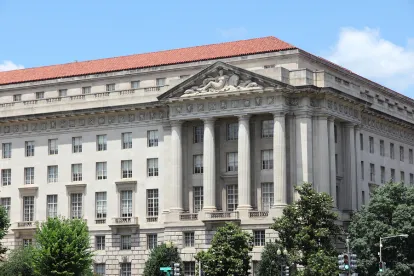On 22 February 2021, the U.S. Court of Appeals for the District of Columbia Circuit (D.C. Circuit) brought clarity to the current and future status of the U.S. Environmental Protection Agency’s (EPA) 2015 Clean Power Plan (CPP) when it issued an order that will prevent the CPP from springing back to life.1 The D.C. Circuit’s order provides EPA a clean slate to work from in developing a new plan to reduce greenhouse gas (GHG) emissions from the electric generating sector.
As background, in 2015, EPA under the Obama administration promulgated the CPP.2 The CPP was an expansive rule that attempted to restructure the nation’s electric generation system. In 2019, the Trump administration repealed the CPP as part of the same rulemaking in which it established its own, more narrowly tailored replacement rule, the Affordable Clean Energy Rule (ACE Rule).
As further discussed in our prior alert, on 19 January 2021, the D.C. Circuit struck down the ACE Rule.3 Although the D.C. Circuit did not discuss the reinstatement of the CPP in its opinion, the court vacated the Trump administration’s rulemaking that repealed the CPP.4 Following that action by the D.C. Circuit, uncertainty and questions regarding the future vitality of the CPP rule and its regulatory obligations began to develop among stakeholders in, and regulators of, the energy industry.
In order to assure that the CPP rule did not again take effect upon the D.C. Circuit’s issuance of the mandate with respect to its 19 January decision, EPA subsequently filed an unopposed motion to partially stay the issuance of the mandate solely with respect to the vacatur of the ACE Rule’s repeal of the CPP.5 In its motion to stay, EPA explained that its requested partial stay of the mandate would “promote regulatory certainty[,]” “avoid the possibility of administrative disruption,” and “remove any doubt about states’ and regulated entities’ obligations under the CPP” while EPA considered “afresh” on remand how to best regulate power plants’ GHG emissions.6 EPA’s duty to establish GHG emissions guidelines for existing coal-fired power plants flows from Section 7411 of the statute, which directs EPA and states to regulate categories of stationary sources that “cause[], or contribute[] significantly to, air pollution” that “may reasonably be anticipated to endanger public health or welfare.”7
1Order, Am. Lung Ass’n v. EPA, No. 19-1140, 2021 U.S. App. LEXIS 1333 (D.C. Cir. Feb. 22, 2021).
280 Fed. Reg. 64,662 (Oct. 23, 2015).
3Am. Lung Ass'n, 2021 U.S. App. LEXIS 1333.
4Id. (“Because promulgation of the ACE Rule and its embedded repeal of the Clean Power Plan rested critically on a mistaken reading of the Clean Air Act, we vacate the ACE Rule and remand to the Agency.”)
5Respondents’ Motion for a Partial Stay of Issuance of the Mandate at 1, Am. Lung Ass'n, 2021 U.S. App. LEXIS 1333.
6Id. at 4.
742 U.S.C. § 7411(b)(1)(A); see id. § 7411(d), (f) (providing that the EPA administrator “shall” adopt performance standards for existing and new sources of air pollution).
8Respondents’ Motion for a Partial Stay of Issuance of the Mandate at 5, Am. Lung Ass'n, 2021 U.S. App. LEXIS 1333.
On 22 February, in a brief order, the D.C. Circuit granted EPA’s motion, indicating that it would withhold issuance of the mandate with respect to the repeal of the CPP until EPA responds to the court’s remand in a new rulemaking action. By granting EPA’s motion to stay, the D.C. Circuit presents EPA with a clean slate (and an obligation) to establish emissions guidelines for existing coal-fired power plants under the Clean Air Act (assuming the D.C. Circuit’s 19 January decision is not appealed and overturned by the Supreme Court or the full D.C. Circuit sitting en banc). EPA will provide status reports on the progress of the administrative proceedings at 90-day intervals.8
EPA’s request for a partial stay provides a hint that EPA wants additional time—to conduct a comprehensive review of the structure and substance of the CPP rulemaking—before undertaking a new rulemaking action establishing new emissions guidelines for existing coal-fired power plants under the Clean Air Act. This partial stay provides a new window of opportunity to those impacted by how these GHG emissions are regulated to make their views known as EPA develops a new regulation.






 />i
/>i

